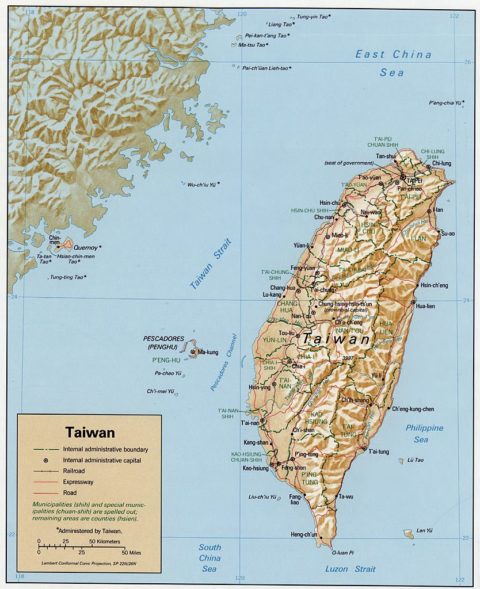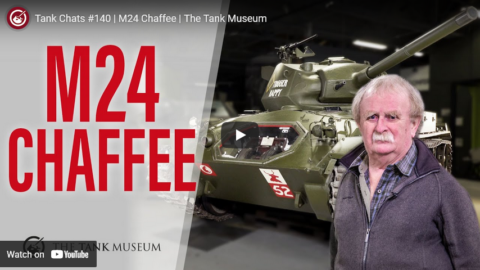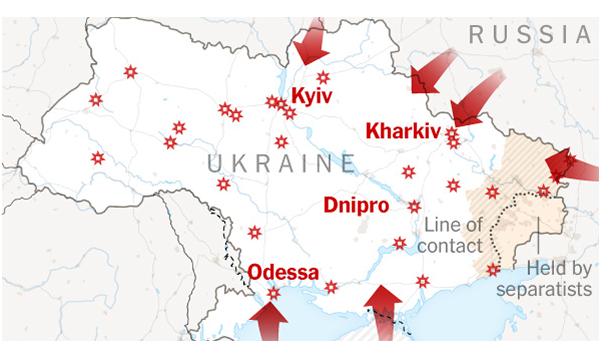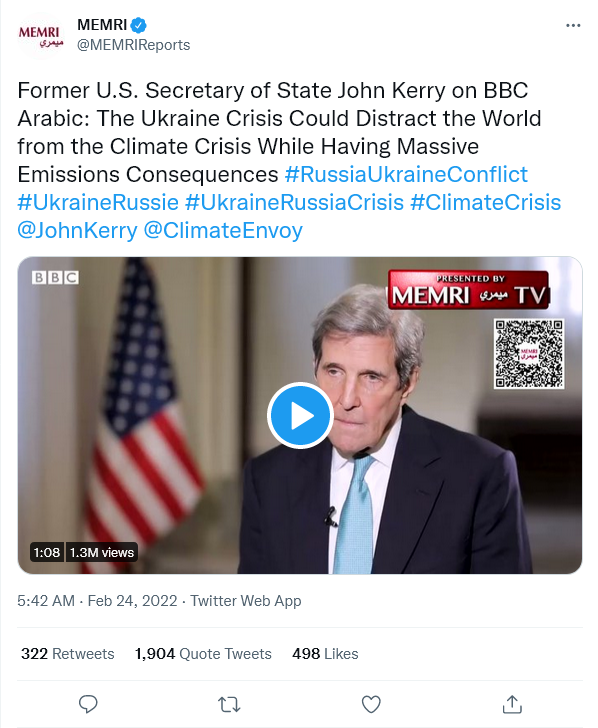seangabb
Published 5 Feb 2021[Update 2023-03-02 – Dr. Gabb took down the original posts and re-uploaded them.]
Here is the third lecture, which describes the decay of the Roman Constitution as a result of changes in patterns of land tenure in Italy after the Second Punic War, and as a result of the flood of foreign money into Rome from military victories and war indemnities and bribes.
(more…)
February 28, 2022
Roman Republic to Empire 03 Inequality and Corruption
Hunting for books in the age of Amazon
In the latest SHuSH newsletter, Kenneth Whyte remembers book searches before the internet got commercial:
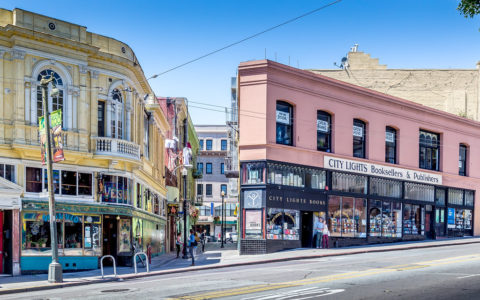
“Beat Ground Zero San Francisco 2014” by Mobilus In Mobili is licensed under
Back in the late twentieth century, I used to build my vacations around book searches. Before going to any new town, I’d make a list of new and used bookstores and hit the best of them during my stay. There was a genuine excitement about entering each store: you never knew what you were going to find, and you were acutely aware that at any moment you might see something you’d never seen before or something you might never see again.
It was especially the fear of blowing that one chance of acquiring something special that turned me into a book hoarder. (I was never disciplined enough to be a collector; I only bought for my own use). Over the years, I accumulated tens of thousands of books. I’d rummage through them, once or twice a decade, and throw out the ones that no longer interested me to make room for new acquisitions. There were always new acquisitions, whether I was traveling or not.
Then came the internet and suddenly the whole concept of book scarcity blew up. Amazon had every new title one could want. I still go to my favorite bookstores when I travel — Daunt’s in London, Prairie Lights in Iowa City, Three Lives & Co. in Manhattan (the world’s most perfect small bookstore), Politics & Prose in DC, City Lights in San Francisco, The Last Bookstore in LA (further below), to name a few. I make the visits (none in the past two years) in part out of a sense of nostalgia for the waning era of brick-and-mortar, and also because well-curated shops often suggest books I might otherwise overlook.
Looking for books on vacation was always one of my habits, and before Amazon came along, I’d carefully search for bookstores along the route we’d be driving during our holiday and I rarely came back without a few armfuls of books. These days, especially since the era of lockdowns began, book stores are mostly just a memory … which is just as well in some sense because I have no disposable cash to spend on fripperies any more.
Of Ken’s list of favourite stores, I’ve only visited City Lights in San Francisco, back in early 1991. It was, bar none, the busiest bookstore I’d ever been in in my life. It rather felt like a record store (remember those?) on a big album release weekend than a staid, stodgy bookstore.
The internet also allowed used bookstores to put their wares online, and Bookfinder.com came along to organize their inventories. Bookfinder.com is a meta-search portal that allows book shoppers to scan the inventories of 100,000 booksellers at once. Type in a title and it will cough up an array of purchasing options: new, used, good condition, poor condition, former library copy, first edition, signed, etc. You compare editions and prices, make your choice, and click through to the bookseller’s site to finalize your purchase.
Bookfinder was launched by a Berkeley student named Anirvan Chatterjee in 1997, just a couple of years after Amazon was born. Chatterjee sold out to AbeBooks in 2005.
AbeBooks is a Canadian tech success story, originally operated out of Victoria by Rick & Vivian Pura and Keith & Cathy Waters. It is a digital marketplace that allows you to search the stock of a wide variety of established retailers. What differentiates it from Bookfinder is that you make your purchase right on the AbeBooks site. AbeBooks also sells the books it represents on other platforms, including eBay, Barnes & Noble, and Amazon. AbeBooks, in short, is a retail business while Bookfinder is a search tool.
AbeBooks was a dangerous discovery for me, and I bought a lot of books through them for a couple of years after discovering the service. Today, of course, not so much, especially as the shipping charges frequently run higher than the initial purchase price of the books themselves. Initially an independent service, AbeBooks is now owned by Amazon.
These days a lot of people want to shop for books anywhere but Amazon or its subsidiaries. For a non-Amazon version of AbeBooks you might try Alibris, founded by Martin Manley in California in 1997 (it’s been passed around to a range of venture capitalists and holding companies and is now in the hands of private investors). Biblio.com is another marketplace, serving mostly collectors. For non-Amazon alternatives to Bookfinder, viaLibri is a slick search tool that I only recently discovered, although it’s not quite as comprehensive as Bookfinder. Bookgilt is a good meta-search site for antiquarian and rare books. For new books, the best alternative to Bezos is your local bookstore, which can get you almost anything you need. See the map at the very bottom of this page or go to Bookshop.org or Indiebound.org. Or you can visit one of the chains, Chapters/Indigo or Barnes & Noble.
I still start most of my used book searches on Bookfinder. It’s old technology, Web 1.0, as hopelessly dated as the Drudge Report, but it works. I find it easy to navigate and it offers far more listings (and more information on each listing) than Amazon. I order from its smaller independents whenever practicable, although it’s often difficult to know exactly who you’re ordering from because the smaller shops are frequently represented on Bookfinder by their resellers, AbeBooks, Alibris, Amazon, and Biblio.
The History of Pecan Pie
Tasting History with Max Miller
Published 16 Nov 2021Support the Channel with Patreon ► https://www.patreon.com/tastinghistory
Merch ► crowdmade.com/collections/tastinghistory
Instagram ► https://www.instagram.com/tastinghist…
Twitter ► https://twitter.com/TastingHistory1
Tiktok ► TastingHistory
Reddit ► r/TastingHistory
Discord ► https://discord.gg/d7nbEpy
Amazon Wish List ► https://amzn.to/3i0mwGtSend mail to:
Tasting History
PO Box 766
Burbank, CA 91503SOURCES**
The Pecan: A History of America’s Native Nut by James McWilliams: https://amzn.to/3mQ2JxJ
Antoine of Oak Alley by Katy Morlas Shannon: https://amzn.to/3kf6sTG**Some of the links and other products that appear on this video are from companies which Tasting History will earn an affiliate commission or referral bonus. Each purchase made from these links will help to support this channel with no additional cost to you. The content in this video is accurate as of the posting date. Some of the offers mentioned may no longer be available.
Subtitles: Jose Mendoza | IG @ worldagainstjose | @Ketchup with Max and Jose
PHOTO CREDITS
Dickey’s BBQ Pecan Pie: Willis Lam, CC BY-SA 2.0 https://creativecommons.org/licenses/…, via Wikimedia Commons
Pecan Tree: By Bruce Marlin – Own work: http://www.cirrusimage.com/tree_pecan…, CC BY 3.0, https://commons.wikimedia.org/w/index…
Oak Alley Plantation: Michael McCarthy via flickr, https://creativecommons.org/licenses/…#tastinghistory #pecanpie #thanksgiving
QotD: Passengers versus freight in railway efficiency terms
First, consider the last time you were on a passenger train. Add up the weight of all the folks in your car. Do you think they weighed more or less than the car itself? Unless you were packed into a subway train with Japanese sumo wrestlers, the answer is that the weight of the car dwarfs that of the passengers it is carrying. The average Amtrak passenger car apparently weighs about 65 tons (my guess is a high speed rail car weighs more). The capacity of a coach is 70-80 passengers, which at an average adult weight of 140 pounds yields a maximum passenger weight per car of 5.6 tons. This means that just 8% of the fuel in a passenger train is being used to move people — the rest goes into moving the train itself.
Now consider a freight train. The typical car weighs 25-30 tons empty and can carry between 70 and 120 tons of cargo. This means that 70-80% of the fuel in a freight train is being used to move the cargo.
Now you have to take me on faith on one statement — it is really hard, in fact close to impossible, to optimize a rail system for both passengers and freight. In the extreme of high speed rail, passenger trains required separate dedicated tracks. Most rail systems, even when they serve both sorts of traffic, generally prioritize one or the other. So, if you wanted to save energy and had to pick, which would you choose — focusing on freight or focusing on passengers? Oh and by the way, if you want to make it more personal, throw in a consideration of which you would rather have next to you on crowded roads, another car or another freight truck?
This is why the supposedly-green folks’ denigrating of US rail is so crazy to me. The US rails system makes at least as much sense as the European system, even before you consider that it was mostly privately funded and runs without the subsidies that are necessary to keep European rail running. Yes, as an American tourist travelling in Europe, the European rails system is great. Agreed. I use it every time I go there. I have to assume that this elite tourist experience must be part of why folks ignore the basic science here.
Warren Meyer, “A Reminder: Why the US Rail System Is At Least as Good As the European System if You Care About Energy Use”, Coyote Blog, 2018-05-25.
February 27, 2022
“Putin finally called our bluff. The question to me is when and if Xi will decide to do the same”
Andrew Sullivan on what Winston Churchill referred to as “the historic life-interests of Russia”, the inability (and unwillingness) of the western nations to do more than send hopes and prayers to Ukraine, and the parallels between the Russia-Ukraine situation and the China-Taiwan potential conflict:
… in one crucial sense, Putin has already won a victory. A nuclear-armed great power has invaded and occupied a neighboring country in Europe, and there is nothing anyone else has been able to do to stop it. Many in the West assumed Putin wouldn’t go that far — surmising that international law, universal condemnation, economic sanctions, and the lack of any serious threat from Ukraine to Russia would restrain him. But he has called our bluff. He has even hinted at Russia’s nuclear capacity to intimidate other states from intervening. And so we have a precedent. Ukraine is a Russian possession. A fact on the ground. All we have been able to do is watch.
All of which brings us to what seems to me to be the larger dimension of this clash: how it will resonate in Beijing and Taiwan. With apologies to Mitt Romney, China is easily the greater geostrategic challenge. And the parallels with Russia are as striking as they are unnerving. China sees Taiwan as part of its national identity in a similar way to how Russia sees Ukraine as part of its. And we are committed to the defense of Taiwan the way we have committed to the defense of Ukraine: kinda, but not really. In the face of this underlying Western ambiguity, the fall of Kiev is news that Xi will be watching closely.
The parallels are not exact, but nonetheless striking. Taiwan is next door to and deeply entangled with China in its history and culture, just as Ukraine is uniquely entangled with Russia. Seeing Taiwan and China (like Ukraine and Russia) as simply random sovereign states with a right to self-determination under international law is correct, so far as it goes. It’s also moral — as majorities of both Ukrainians and especially Taiwanese want independence and have constructed nascent democracies in the wake of autocracy.
But the nationalist passion Russia feels about Ukraine and China feels about Taiwan is real, visceral, and hard for outsiders to understand intuitively. The sense of a rogue region that somehow got away from the homeland is vivid among Russian and Chinese nationalists. This kind of understanding — claiming a “sphere of influence” — is now deemed reactionary by the West’s foreign policy elites, as, perhaps, it should be. But that doesn’t mean that everyone, especially China and Russia, have actually moved past it. Even Americans have very different emotional responses to perceived threats in our own hemisphere compared with the rest of the world. So this is also a culture clash of sorts — globalism and the nation state vs nationalism and spheres of influence.
I’m not saying that this belief in a sphere of influence is a universal view in Russia or China — or that it is justifiable. I’m just saying it is real. And I’m not excusing Putin or Xi from taking a particularly zealous view of this irredentist nationalism, which they both do, for their own personal and political advantage. I’m just noting how national pride deeply informs them, that resentment of the West consumes them, that a sense of historical grievance spurs them on — and that they are not outliers among their compatriots. It is crazy to underestimate the power of this kind of revanchist nationalism — among rulers and ruled. And I fear we underestimated it in the case of Putin.
This means, as Barack Obama once insisted, that Russia will always care much more about Ukraine than we do; and China will always care much more about Taiwan than we do. In those cases, the last thing we should do is promise support that we do not seriously — truly seriously — intend to provide. The vague pledge by the Western powers not to rule out future NATO membership for Ukraine was the worst of all worlds: poking the bear, with no serious intention of fighting it.
The fall of Afghanistan was a margin call … and Ukraine is the point where airy western “guarantees” will have to be backed up with actual force. But western leaders have grown very comfortable in a world where gestures were taken seriously and few if any such gestures actually had to be followed-through with meaningful action. And now, the geopolitical pantomime is over and we’re back in a world where gestures are seen as signs of weakness and do nothing to deter adventurism.
The Blitzkrieg is Back – WW2 – 183 – February 26 1943
World War Two
Published 26 Feb 2022Erich von Manstein’s Axis counterattack on the Eastern Front begins this week and right away smashes through the Red Army lines, threatening all the recent Soviet gains. The Allies — the Americans — also suffer a big defeat in Tunisia at the Kasserine Pass, though in the Pacific it is the Americans who occupy the Russell Islands.
(more…)
Canada couldn’t intervene in a modern war even if we wanted to
In The Line, Matt Gurney considers the state of the Canadian Armed Forces, which have been systematically starved of resources since, oh, 1968 (we started cashing in the “peace dividend” long before there was one):
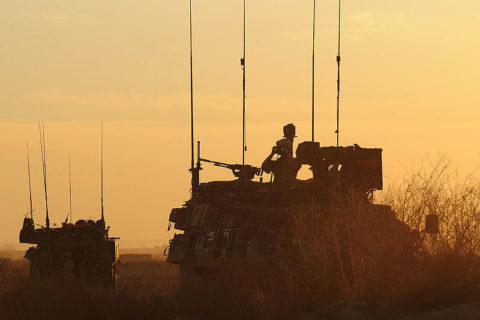
Canadian Army LAV III convoy near Khadan, Afghanistan – 2010-01-25
Photo by Staff Sgt. Christine Jones via Wikimedia Commons
We assumed that we’d never need the heavy, nasty stuff — history had ended. We cut our budgets and our force levels again and again, until many of our critical capabilities really exist on paper only. Canada’s fighter jet fleet of alarmingly elderly CF-18s is large enough to technically meet the requirements of keeping a few jets on alert for NORAD missions, intercepting the odd plane near our airspace, and showing the flag on NATO missions. We can even hurl some bombs on enemy groups that are annoying us, as we did with the Islamic State, because, well, they can’t shoot back. Our navy is much the same: we have a fleet large and capable enough to more-or-less patrol parts of our own coast and contribute to the odd international patrol mission abroad, because doing so buys us some diplomatic credibility — it is table stakes for being a sorta-paid-up member of the Western alliance. Our army has enough men and equipment to help out with domestic missions at home or to contribute in small missions to broader coalition efforts, though it’s a struggle to do both at the same time. That’s basically all we assumed we’d need, and we “rationalized” our budget and capabilities accordingly.
Again, yes, this made sense for a time. But it was obvious a decade or so ago — around when Obama was mocking Romney — that China was a power on the rise. Russia invaded Ukraine the first time in 2014. That was another wakeup call we ignored. For the last decade, certainly for the last five years, we’ve indulged in a kind of make-believe defence policy planning, where we were enthralled to an increasingly obsolete and dangerous post-Cold War mindset that was as narrow and misguided as the “Cold War thinking” the soft-power advocates of the post-1991 era disdained among the old guard.
We defence hawk weirdos who sweated blood with each abandoned capability were right, though. History wasn’t over. We hadn’t seen the end of great power war, or at least the real danger of it. The world is a dangerous place. This might be a surprise in the corridors of power in Ottawa, but it’s not like they weren’t warned. I’ve got 15 years of National Post bylines to prove it.
We are missing critical capabilities that our troops would need — need — in order to not get wiped out in a conflict with a relatively modern opponent. The Canadian Army has very good armoured vehicles for infantry. That’s good! Our LAVs are genuinely excellent. But we don’t have self-propelled artillery. We have only a few dozen tanks, and very little anti-tank missile capability (anti-tank missiles can be fired by infantry on foot or from vehicles; we don’t have a ton of missiles to go around in any case). Recruitment has lagged, and we are notoriously slow at actually processing an applicant into service. Perhaps most alarmingly in the current context, the Canadian military has basically zero air defence capability. If under air attack by helicopters, attack aircraft or, increasingly, drones, our guys could fire wildly into the air and hope to get lucky. That’s about it.
It’s a classic Canadian procurement story, of course, and perfectly emblematic of the bigger problem. We used to have mobile air defence. We didn’t have a ton, but we had 36 M113 armoured vehicles — an older vehicle, but a proven workhorse — that came armed with eight missiles that could be used against attacking air threats or tanks (given our paltry anti-tank capability, that’s two birds with one stone!). We procured the “ADATS” vehicles right at the end of the Cold War, never ended up needing them on any of our missions during the 1990s and early 2000s, and scrapped them without replacement in 2012, because Stephen Harper had a budget to balance and didn’t want to spend a bunch of bucks either modernizing the system or buying something new. We realized by 2019 that that was a bad idea, and began a procurement process to replace them, and the earliest we could expect delivery is … the end of this decade.
So for now, we try to buddy up with allies that have anti-air defences, or expect our troops in the field to put their faith in the Lord and mediocre Russian targeting systems. But even if we rush a procurement of some air-defence systems, that would just plug one gap among many. Why the hell haven’t we picked a fighter jet by now? Oh, yeah: Because no leader wants to spend the money and assumed we’d never need them, anyway. Oops! Why haven’t we gotten the new navy ships under construction, or begun work on the next-generation submarines? Huh, that’s weird — it’s the same reason: we’re cheap and assumed we wouldn’t need them, so flaking out wasn’t risky. Why aren’t we pushing ahead with NORAD radar modernization? Why was buying trucks such an ordeal? Why are we still incapable of buying a new 9mm pistol? Same, same and same.
For the politicians, military spending is a boring and distracting waste of money they’d rather spend on something they think voters would like. This is a mindset that is deeply set in among Canadian politicians, and it applies basically evenly across Liberals and Conservatives alike (the others are even worse). There has been a massive failure of imagination across not just our political class, but our society more generally. We have dropped the ball, and are now at the mercy of events.
Who is Springfield Armory? A Tale of Two Entities
Forgotten Weapons
Published 20 Feb 2018Today we will take a look at the history of Springfield Armory – both the American national arsenal founded in the 1770s and the commercial entity founded in the 1970s.
http://www.patreon.com/ForgottenWeapons
Cool Forgotten Weapons merch! http://shop.bbtv.com/collections/forg…
If you enjoy Forgotten Weapons, check out its sister channel, InRangeTV! http://www.youtube.com/InRangeTVShow
QotD: Tactics, operations, strategy, grand strategy … let’s call the whole thing off
I watched this video by Military History (not) Visualized on the distinction between tactics, operations and strategy a couple of years ago, but I ran across it again, and I think it is interesting, although I do not entirely agree with the taxonomy. The are a few linked major changes I would have made – and these aren’t really corrections (he isn’t wrong), so much as preferences. First, I think it should probably be more strongly stressed that “grand strategy” is often not broken out in this taxonomy; MHnV is very much presenting a taxonomy with grand strategy as its own distinct entity (and consequently, the space for regular strategy is dramatically shrunk). He notes this, but doesn’t note strongly enough that in selecting grand strategy out, he is effectively presenting not a three-part taxonomy (as his title and structure implies), but a four-part taxonomy, with the fourth part removed. That’s a pretty important difference to leave out!
That in turn leads him to under-emphasize the massive difference between the two definitions of strategy he presents (though he seems aware of its significance, a viewer might not be): one of which confines itself to how to achieve policy ends by military force and the other of which includes the decision not to use force to achieve those ends. I very much prefer the latter definition of strategy, to the point that I am fond of saying that “any game which doesn’t let you declare peace is merely Real Time or Turn Based Tactics.” A definition of strategy that includes only “how to use military force to achieve policy ends” risks fading rapidly into operations and […] mistaking operations for strategy is a classic and disastrous planning blunder.
It’s still a very useful video, especially as a starting point for thinking about these terms, but those are points I think could have done with a touch more clarification; again, not a critique per se – nothing MHnV says is wrong, just a preference.
Bret Devereaux, “Fireside Friday: August 14th, 2020”, A Collection of Unmitigated Pedantry, 2020-08-14.
February 26, 2022
In The Highest Tradition — Episode 3
British Army Documentaries
Published 27 Oct 2021This third episode in a six-part series delving into the world of regimental tradition looks Gurkhas’ history and commitment to the British Army. They swear their oath of allegiance directly to Her Majesty the Queen and continue to revere “The Queen’s Truncheon”, which was awarded to them by Queen Victoria in recognition of their service during the Indian Mutiny.
© 1989
This production is for viewing purposes only and should not be reproduced without prior consent.
This film is part of a comprehensive collection of contemporary Military Training programmes and supporting documentation including scripts, storyboards and cue sheets.
All material is stored and archived. World War II and post-war material along with all original film material are held by the Imperial War Museum Film and Video Archive.
“The [House of] Commons of 1621 would get completely out of control — all thanks to beer”
In the latest Age of Invention newsletter from Anton Howes, we’re still back in the reign of King James I of England (also at the same time King James VI of Scotland), and the king has a financial woe that has forced him once again to try getting Parliament to vote him the funds he needs to wage war:
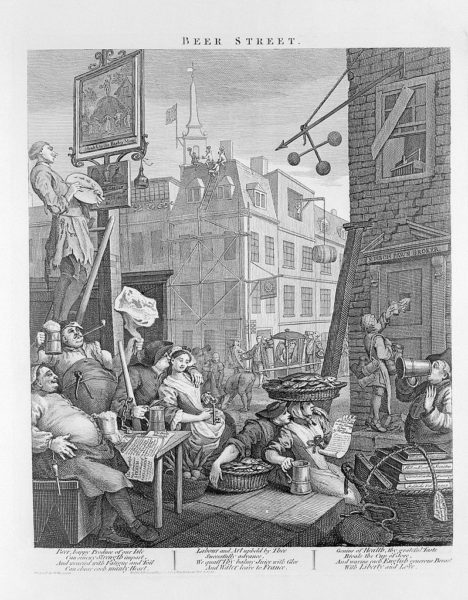
Beer Street, from Beer Street and Gin Lane by William Hogarth. The picture is a counterpoint to the more powerful Gin Lane — Hogarth intended Beer Street to be viewed first to make Gin Lane more shocking — but it is also a celebration of Englishness and depicts of the benefits of being nourished by the native beer.
Wikimedia Commons.
1620 was a dramatic year for England. As I mentioned last time, the rashness of the king’s son-in-law threatened to pull the country into a major European conflict. Religion, honour, and family — James I’s grandchildren were set to lose their inheritance, the Palatinate of the Rhine — dictated that the king should break his decades-long habit of peace. But war was hugely expensive, and the king already heavily in debt. He was forced to summon Parliament so that it could vote him the taxes he would need to wage war.
Parliament was already a major source of annoyance to James I. After 1610, he had done everything in his power to rule without its aid, at one point even comparing its lower house, the Commons, to a “House of Hell”. Yet the MPs of 1610 would come to seem almost angelic compared to those who assembled in Westminster in 1621. The Commons of 1621 would get completely out of control — all thanks to beer.
Beer (and ale, made without hops) was the most important source of calories after bread, and the first choice for hydration — cheaper than wine and safer than water, with coffee, tea, and spirits only becoming popular much later. It financially supported inns, the crucial infrastructure for travellers. Alehouses also provided a major focal point for socialising. If you controlled beer, you controlled society — second only, perhaps, to religion.
If beer was too strong, it could lead to drunkenness and unrest. If inns went unpoliced, they could become havens for criminals, heretics, sinners, and rebels. If brewers used too much malt, made from grains like barley, they could drive up the price of bread and cause famine. If beer-brewers demanded too many hops — used as both a preservative and a source of bitterness compared to sweeter ale — they could also put pressure on otherwise scarce land for food. Regulating the drinks industry correctly was thus a major priority for those in charge.
The making and selling of ale had originally been dominated by brewsters — that is, by female brewers. (Compare with the more persistent word spinster, to mean a woman who spins thread. Spinning remained women’s work long after the brewsters had been driven out of their industry. Only later, because of the independence that earning one’s own money brought, did spinster gain the more general meaning of a woman who was unmarried.) Meanwhile, hopped beer had been the preserve of immigrants. As one popular ditty put it, “Hops, Reformation, baize, and beer, Came into England all in one year”, though it had actually happened more gradually over the course of the late fifteenth and early sixteenth centuries.
Yet with population growth, and the dramatic expansion of London in particular, the drinks market became larger and more concentrated, while hop-less ale gave ground to the rise of beer. Male, English ale-brewers seized an opportunity to suppress their competition. London’s Ale Brewers’ Guild, for example, abandoned the use of hucksters — predominantly female ale-sellers — and then in 1556 absorbed the Beer-Brewers’ Guild, which had largely consisted of immigrants. The newly-amalgamated Worshipful Company of Brewers then barred immigrants from becoming members, while the English ale-brewers switched to producing beer. In 1574, they even successfully lobbied for the city to bar foreigners from being members of any guilds at all, including even second-generation immigrants born in England. The bigger the business, the more ruthless it became.
Tank Chats #140 | M24 Chaffee | The Tank Museum
The Tank Museum
Published 19 Nov 2021Our Patreons have already enjoyed Early Access and AD free viewing of our weekly YouTube video! Consider becoming a Patreon Supporter today: https://www.patreon.com/tankmuseum
David Fletcher is back with another Tank Chat on the M24 Chaffee. Learn all about this American light tank and how it was used at the end of the Second World War and in post-WW2 conflicts.
Visit The Tank Museum SHOP & become a Friend: ►tankmuseumshop.org
Twitter: ► https://twitter.com/TankMuseum
Instagram: ► https://www.instagram.com/tankmuseum/
#tankmuseum #tanks
QotD: Taste in decoration
The villa itself is beautiful, a tasteful combination of traditional Javanese and Balinese influences with a secluded pool and tropical garden. The architect should be commended. The decorators, however, should be fed to wild pigs. To call the interior “kitsch” is to be too kind. Gilt framed mirrors compete with gilt framed pictures and massive gilt encrusted chandeliers. Understatement and elegance are in short supply. Indeed, they’ve fled the premises in horror. Vulgar tchotkies, however, abound. A life size porcelain tiger crouches in the entry way. Cherubs peer down from walls and [the owner is] a Muslim for christsake.
It’s as if a Las Vegas wedding chapel designer had been abducted, brought to Indonesia, and forced, at gun-point, to lower his standards. One half-waits for the Elvis impersonator to come down the staircase.
Conrad, “The Long Weekend”, The Gweilo Diaries, 2004-09-28
February 25, 2022
Total War NOW – WAH 053 – February 1943, Pt. 2
World War Two
Published 24 Feb 2022Germany declares total (unconditional war) putting its economy on a full war footing over three years into the war. Given the unconditional war they are already waging, and the resistance and opposition they now face, it’s unclear what it shall mean.
(more…)
Tsar Vlad begins the next stage in rebuilding the Russian empire
Niall Ferguson from The Spectator:
“War:, in Prussian military theorist Carl von Clausewitz’s most famous dictum, “is nothing but a continuation of politics with the admixture of other means.” A generation of Democrats — the American variety, but also European Christian and Social Democrats — have sought to ignore that truth. Appalled by the violence of war, they have vainly searched for alternatives to waging it. When Vladimir Putin ordered the annexation of Crimea in 2014, Barack Obama responded with economic sanctions. When Putin intervened in the Syrian civil war, they tried indignant speeches.
When it became clear that Putin intended a further and larger military incursion into Ukraine, Joe Biden and his national security team opted for sanctions once again. If Putin invaded Ukraine, they said, Russia would face “crippling” or “devastating” economic and financial penalties. When these threats did not deter Putin, they tried a new tactic, publishing intelligence on the likely timing and nature of the Russian assault. Cheerleaders for the administration thought this brilliant and original. It was, in reality, a species of magical thinking, as if stating publicly when Putin was going to invade would make him less likely to do so.
Those who dread war approach diplomacy the wrong way, as if it is an alternative to war. This gives rise to the delusion that, so long as talks are continuing, war is being averted. But unless you are prepared ultimately to resort to force yourself, negotiations are merely a postponement of the other side’s aggression. They will avert war only if you concede peacefully what the aggressor is prepared to take by force.
Putin decided on war against Ukraine some time ago, probably in July when he published a lengthy essay, “On the Historical Unity of the Russians and Ukrainians”, in which he argued tendentiously that Ukrainian independence was an unsustainable historical anomaly. This made it perfectly clear that he was contemplating a takeover of the country. Even before Putin’s essay appeared, Russia had deployed around 100,000 troops close to Ukraine’s northern, eastern and southern borders. The response of the United States and the European Union was to make clear that Ukraine was a very long way indeed from either Nato or EU membership, confirming to Putin that no one would fight on Ukraine’s side if he went ahead with his planned war of subjugation.
Over the past few months, Putin has used diplomacy in the classical fashion, seeking to gain his objectives at the lowest possible cost while at the same time carefully preparing for an invasion. Western leaders have achieved nothing more than to remain united in saying they will impose sanctions if he invades. But a Russian invasion of Ukraine beyond the Donbas will create an entirely new situation. Politicians on both sides of the Atlantic may express a common outrage, but it will not take long for their unity to be eroded by the altered reality and their fundamentally divergent interests. The US does not need Russia’s natural gas. At least in the short run, Europe does.
Arthur Chrenkoff offers what he calls “disjointed thoughts at a tragic time”:
Putin is invading Ukraine – not just sending “peacekeepers” into the breakaway pro-Russia regions in the east of the country – in order to “denazify” and “demilitarise” the country. The former is an outrageous slur in a long communist tradition from Stalin to today’s Western left of smearing anyone they don’t like and agree with as a Nazi. Ukraine is as Nazi as Australia or Greece, or Russia for that matter. “Demilitarisation” is the more pertinent excuse. What Putin wants is a cordon sanitaire separating Russia from the West (which now includes Poland and the Baltic states). His vision for Ukraine is a pro-Russia puppet state or at least a neutral and impotent non-entity. According to Putin, Russia’s got a legitimate security interest in not being bordered by hostile (read pro-Western) states. Why this should trump Ukraine’s (or any other country’s) legitimate security interest in its own security, territorial sovereignty and the choice of international friends is unknown, except that might makes right and Russia fancies itself as a special case on the basis of its past great power status.
No country has an obligation to send it troops to fight a conventional war with Russia in Ukraine. But countries have moral obligation to offer any and all assistance to the people of Ukraine, including military equipment, as they defend themselves against unprovoked aggression. Countries also have moral obligation to punish Putin and Russia with utmost severity, including – if only they had the guts – complete economic and trade sanctions. Not a drop of Russian oil or a cubic foot of its gas. Let Putin swim in his unsold carbohydrates. Sadly that won’t happen because the Western European governments have, despite numerous warnings, made themselves energy dependent on imports from Russia. Shutting down coal, closing nuclear power plants and praying to the sun and the wind are now coming home to roost.
At First Things before the invasion began, George Weigel explained what was being obscured by Russian propaganda and western media complaisance:
For months now, the world press has described Russian troop deployments along Ukraine’s borders as spearheads of a possible invasion. The truth, however, is that Russia invaded Ukraine seven years ago, when it annexed Crimea and Russian “little green men” ignited a war in eastern Ukraine that has taken over 14,000 lives and displaced over a million people. Whatever the current military developments, a Russian invasion of Ukraine has not been “imminent”; the invasion is ongoing.
That fact has been obscured by a massive Russian propaganda and disinformation campaign. So some truth-telling is imperative.
The first fact: This is a Russian crisis, not a “Ukraine crisis”. What is typically called the “Ukraine crisis” is entirely of Russian autocrat Vladimir Putin’s making. Ukraine did not create this crisis. The United States did not create it, and neither did NATO. The North Atlantic Treaty Organization, which is, was, and always will be a defensive alliance, is no more a threat to Russian national security than NATO is to Botswana’s national security. The claim that NATO threatens Russia is a Big Lie that obfuscates the security realities in central and eastern Europe: Former Soviet satellites (Poland, the Czech Republic, Slovakia, Hungary, Romania, Bulgaria) and the Baltic states (Lithuania, Latvia, Estonia) joined NATO because they fear Russia, not because they intend to invade Russia. The same rationale explains Ukraine’s NATO application.
The second fact: This artificially created crisis, aimed at Ukraine’s destabilization and subjugation, is one expression of Putin’s determination to reverse history’s verdict in the Cold War. Putin has been quite clear about this for twenty years, and only fools or those peering through the ideologically befogged lenses of the new “national conservatism” fail to grasp what is afoot here. Putin, the old KGB apparatchik, is bent on overturning the victory of imperfect democracies over pluperfect tyrannies in the Revolution of 1989 and the Soviet crack-up of 1991. That grand strategic goal is at the cold heart of the recently announced alliance of purpose between Putin’s kleptocratic regime in Russia and Xi Jinping’s genocidal regime in China — an announcement these two wicked men made just before the Winter Olympics. Putin and Xi want nothing less than a fundamental re-ordering of world affairs in which their oppressive regimes call the tune. In the tyrants’ bid for global hegemony, Ukraine and Taiwan are in the role played by Austria and Czechoslovakia in the late 1930s: If they fall to the tyrant-regimes, others will follow.
At Samizdata, Perry de Havilland notes that not every single thing that happens in the wider world is linked to or directed by American action:
Yes, the United States is the richest and most powerful nation on earth and it has been since World War II. And yes, it has interfered under presidents of all stripes for good or ill in a great many places, in pursuit of its perceived geopolitical interests, sometimes benignly, other times with a breathtaking lack of judgement.
But just as the leaders of that great nation have often overestimated the USA’s ability to impose its will in far away lands, many people in many places similarly overestimate America’s involvement everywhere. They largely deny that local people have agency, oblivious to the fact people everywhere are capable of organising politically in ways not directed and driven from an agency in Langley, Virginia. As a friend of mine who was deeply involved in the 2014 Maidan revolt in Kyiv said to me once:
“Woah! I’ve just heard we’re all CIA puppets on Washington’s payroll. There must have been an oversight as me and my friends never got a penny. You know people in America, so can you get me an address to apply for that lovely CIA money I’m apparently due?”
He was of course joking, but Maidan was a golden example of how something overwhelmingly driven and executed by Ukrainians, in Ukraine, in response to Ukrainian political and social pressures becoming intolerable, was nevertheless written off as CIA mischief-making.And whilst that was pushed hard by Russia when their pet oligarch was deposed, its entirely possible Putin himself believes it too. It is actually more supportive of his worldview than the notion it really happened because millions of Ukrainians loathed Putin, his Ukrainian’s puppet in Kyiv, and the malign influence of Russia generally.
But so many people seek a simpler world, a bipolar one in which everything is down to the Big Actors (with America still the biggest at the moment). Understanding that and feeding into it grants profound insight into Russian (and to some extent Chinese) propaganda. Add to that the rightly shattered confidence in Western institutions the last two years has wrought, and it is not surprising otherwise discerning folk fall for it.
And with bombs dropping and people being killed in Ukraine, John Kerry keeps his laser focus on the important issue — climate change:


